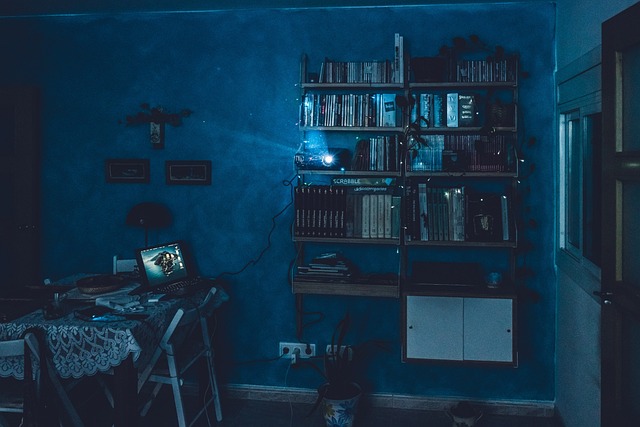The DivX Codec has revolutionized streaming media, offering exceptional image quality at low bitrates ideal for smart TVs with limited bandwidth or storage. By utilizing advanced algorithms, it optimizes video compression while preserving critical visual elements, resulting in smaller file sizes, faster downloads, and smoother streaming even over unstable internet connections. Play DivX on TV provides a seamless experience for enjoying high-quality video content at home by balancing video quality and file size through strategic settings adjustments, ensuring optimal visual fidelity. To maximize the benefits of playing DivX on TV, users should check their TV's compatibility, keep firmware updated, calibrate display settings, and configure output settings to match the content's aspect ratio and resolution.
Discover the secrets to enjoying stunning video quality with DivX codec, even at low bitrates. This comprehensive guide explores how to play DivX on your TV seamlessly. From understanding DivX’s capabilities to mastering strategies for maintaining image clarity, we’ll show you how to get the most out of your videos. Learn about the impact of bitrate and gain insights into setting up your TV for optimal DivX playback experience.
Understanding DivX Codec: Unlocking High-Quality Video Streaming

DivX Codec, a powerful video compression technology, has revolutionized streaming media by offering exceptional image quality even at low bitrates. This is particularly beneficial for users looking to enjoy high-definition content on devices with limited bandwidth or storage capacity, such as smart TVs. By efficiently compressing video data while preserving critical visual elements, DivX ensures that viewers can enjoy crisp, clear pictures and smooth playback without experiencing significant loss in quality.
When you Play DivX on TV, it leverages advanced algorithms to optimize the streaming process. These algorithms intelligently analyze the content, removing redundant or less perceptible data without compromising the overall viewing experience. This results in smaller file sizes, allowing for faster downloads and smoother streaming, especially over unstable internet connections. Whether you’re a movie enthusiast or a content creator, DivX offers a seamless way to enjoy high-quality video on your TV, providing an immersive and enjoyable experience right from the comfort of your home.
The Impact of Bitrate on Video Quality: A Deep Dive

The quality of a video is intrinsically linked to its bitrate—the measure of data used to encode each second of footage. Lower bitrates result in smaller file sizes but can lead to decreased video quality, with noticeable artifacts and reduced clarity. In contrast, higher bitrates offer sharper, more detailed visuals but come at the cost of larger file sizes, making them less suitable for streaming or storing on devices with limited space.
When it comes to Play DivX on TV, the goal is to enjoy high-quality video without compromising on convenience. Thanks to advancements in video compression technology, DivX codecs excel at maintaining exceptional image quality even at relatively low bitrates. This achievement allows users to experience vibrant and detailed visuals while keeping file sizes manageable, making it ideal for streaming directly to a TV or optimizing video content for online distribution.
Strategies to Maintain Image Clarity at Lower Bitrates

To maintain image clarity even at low bitrates, several strategic considerations come into play. One effective method is to utilize advanced encoding techniques like those offered by DivX. These codecs are designed to compress video data efficiently while preserving fine details and minimizing artifacts. By choosing the right settings, users can balance between file size and visual quality, ensuring a crisp picture even when streaming or storing videos at lower bitrates.
Additionally, optimizing aspects such as resolution, frame rate, and quantization parameters can significantly impact final output. Lowering the resolution reduces data volume but may require careful adjustment to avoid blurriness or loss of crucial details. Adjusting frame rates and quantization settings allows for more control over image clarity, ensuring that vital visual elements remain sharp and distinct, even when bitrates are constrained, making the experience suitable for playing DivX on TV while maintaining a high level of visual fidelity.
Setting Your TV Up for Optimal DivX Playback Experience

To get the best out of your TV and enjoy exceptional image quality while playing DivX content, there are a few simple steps to set up an optimal playback experience. Start by ensuring your TV supports DivX codec, which is crucial for decoding these files efficiently. Most modern TVs support various video formats, including DivX, so check your television manual or specifications to confirm compatibility.
Next, connect your TV to a reliable internet source and update its firmware regularly to take advantage of the latest improvements in video processing. Calibrate your display settings, such as brightness, contrast, and color temperature, according to your preference and viewing environment. Additionally, configuring your TV’s output settings to match the aspect ratio and resolution of your DivX content can further enhance visual clarity and immersion during playback.
DivX Codec offers a remarkable ability to deliver exceptional video quality, even at low bitrates, making it an ideal choice for streaming. By understanding the impact of bitrate and employing strategies to maintain image clarity, you can enjoy crisp, vivid visuals when playing DivX on your TV. Set up your television correctly, and you’ll unlock a seamless playback experience that showcases the best of DivX technology.
